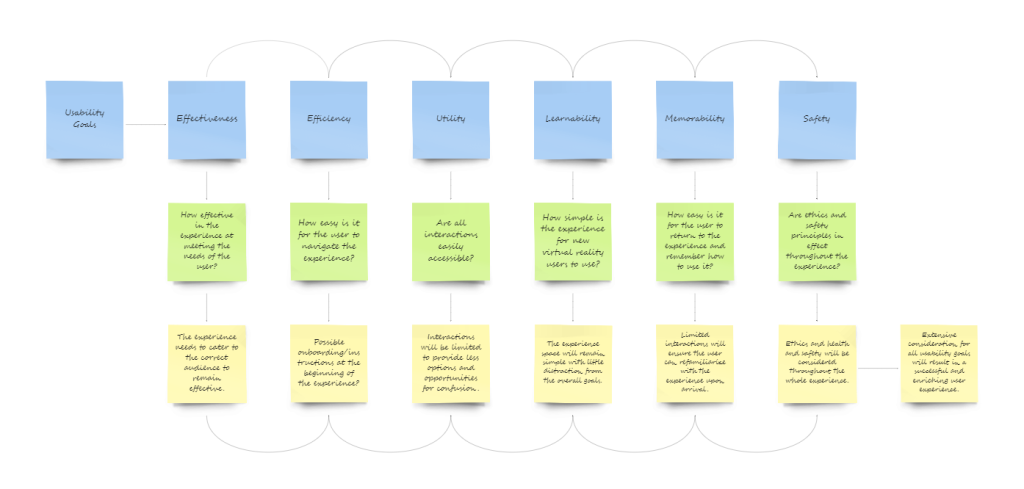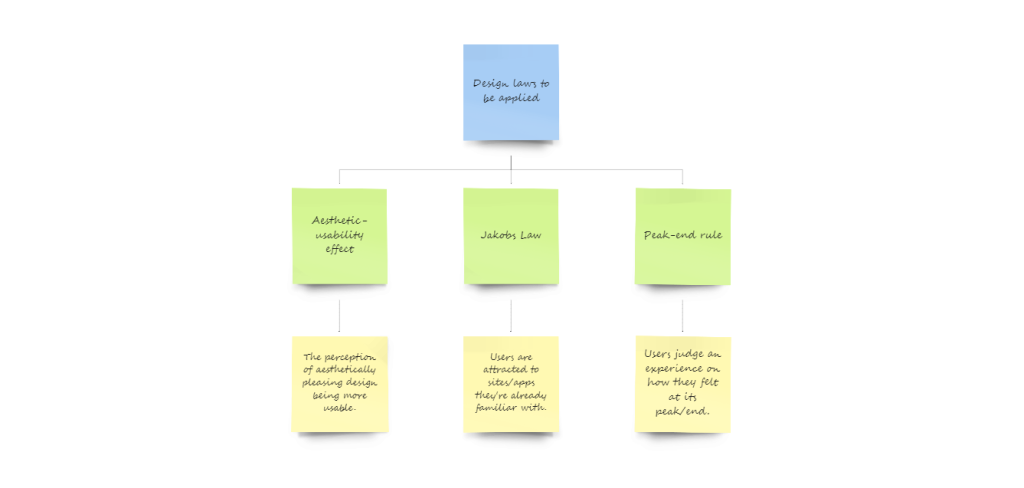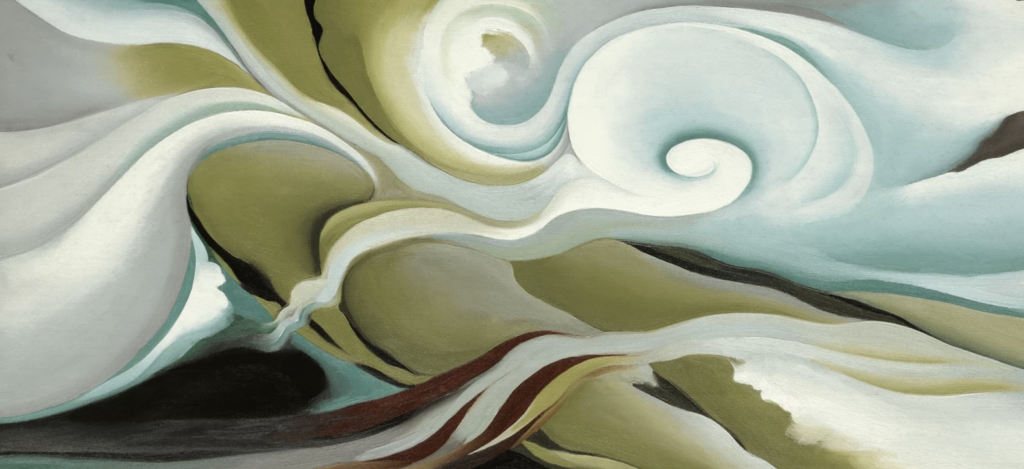Introduction
An overview of virtual reality as stated by Garter, ‘virtual reality (VR) provides a computer-generated 3D environment (including both computer graphics and 360-degree video) that surrounds a user and responds to an individual’s actions in a natural way, usually through immersive head-mounted displays. Gesture recognition or handheld controllers provide hand and body tracking, and haptic (or touch-sensitive) feedback may be incorporated. Room-based systems provide a 3D experience while moving around large areas, or they can be used with multiple participants.’ (Garter, 2023).
My immersive piece will use the emerging technology of virtual reality to cultivate a 360-degree environment that explores and brings to life the works of Georgia O’Keeffe, specifically her abstract paintings.

Research Overview
Virtual Reality (VR) Immersive Art Research
My evolving immersive art research has uncovered the professional works of Exhibition Hub and Fever, the two company’s work together to produce spectacular virtual reality 360-degree videos. light and music experiences. Together they have produced over 70 exhibitions worldwide. One of these exhibitions being The Vincent van Gogh, immersive experience which can be observed in many cities around the world. The experience uncovers the artists most compelling works, showcasing paintings, art development and reasonings behind his immense dexterities. The videos below explore the immersive experience and also provide first hand insights and reviews from diverse audiences around the world. My project aims to develop a similar virtual reality experience.
Further research led me to discovering a past immersive experience that explored the works of Georgia O’keeffe. The Georgia O’Keeffe Museum described the experience, ‘Dive into the mind and inspirations of one of the world’s most iconic and revered artists at Music for the Eyes: A New Georgia O’Keeffe Experience at Electric Playhouse in Albuquerque.’ (Georgia O’Keeffe Museum, 2022). The collaborative immersive experience featured large scale digital projections, interactive displays and animations of Georgia O’Keeffe’s artworks. The video news article below explores the reasonings behind the immersive exhibition.

As an interactive Georgia O’keeffe exhibition has already been developed my project aims to expand on this by incorporating virtual reality, something that wasn’t included in the original experience. My developing Georgia O’Keeffe experience will draw inspiration from the above research to create a new and captivating immersive experience with the use of virtual reality apps including, Open Brush, Gravity Sketch and Tilt Brush.
Artist Research – Georgia O’keeffe
Georgia O’keeffe is one of the most influential artists of the 20th century, known for her contribution in modern art. Her abstract pieces were inspired by her feelings towards life’s experiences as quoted by her ‘I had to create an equivalent for what I felt about what I was looking at – not copy it.’ (About Georgia O’Keeffe, 2023). Georgia O’Keeffe’s substantial archive of artwork includes many different art mediums and pieces from, abstracts, animals, bones, buildings, plants and more. My project will emphasise and focus on O’Keefe’s abstract plants, flowers and landscape scenes.
Analysis of Georgia O’Keeffe’s Abstract Paintings

The natural forms and shapes of nature were a huge concentration for many of O’Keeffe’s paintings. Which is why I have chosen to analysis the above paintings of a landscape, flower and tree stump. The free-flowing strokes used throughout her paintings are simple and curvy, creating a unique fusion of realism and abstraction. Her use of bright bold colours and scale experimentations contribute to her surreal graphical outcomes that explore space and composition in a unique manner. O’Keeffe’s paintings were almost always painted from a frontal view, colour hues and shading were used to distinguish shapes rather than the paintings being three-dimensional. This technique provides a sense of space and scale of each plant, tree or scene.
My virtual reality experience will feature a few different paintings by Georgia O’Keeffe in a large three-dimensional scale which will bring to life her paintings in a walkable and immersive environment. Much like the previous Georgia O’keeffe exhibition explored her paintings and referred to them as music for the eyes, my experience will incorporate soothing atmospherically pleasing music to complement the soft and curvy paintings providing a more emotional outcome and connection within the user.
User Experience (UX) Considerations
Expanding on the user experience (UX) outcomes and considerations, the target audience for the virtual reality (VR) exhibition will be adults interested in art and history. Those who are potentially new to the world of virtual reality and want to begin their experience in a comforting and calming environment. A space where they can get to know the hardware and experience a slower integration into the software. Without the risk of potential motion sickness and other psychological adaptations users feel when immersed into uncompromising games or simulations.
Considering the five user experience principles required for problem solving, the virtual reality experience will be well thought out in terms of the health and safety regulations relating to the users. The five principles include, effectiveness, efficiency, utility, learnability, memorability and safety. These aspects are explored in the diagram below.
Miro link – https://miro.com/app/board/uXjVNNezvxE=/?share_link_id=858220233973

Ensuring the experience is effective at meeting the needs of the user, the target audience will be at the forefront of the experience. Providing a thorough design experience for Georgia O’Keeffe fans to explore is paramount to the success of the immersive environment. A possible interactive onboarding sequence at the beginning of the experience will ensure user efficiency, providing them with how to instructions or an introduction to the experience will fulfil this requirement. Limited interactions and in experience options will ensure the integrity of the design utility, making it easy for the user to navigate the scene and avoid confusion, resulting in longer play time. Incorporating learnability and memorability will ensure the user can easily return to the application without having to relearn the system and scene navigation. Finally, extensive consideration for ethics and safety throughout the experience is extremely important for emerging technologies such as virtual reality (VR). Considering dangers and ethical problems will ensure the user trusts the application and feels safe using it.
Below are some persona maps that explore, goals, needs, frustrations, and potential solutions that will enhance the user experience of my final immersive art experience. Incorporating personas into my project injects a sense of realism and encourages me to think about the user as a real person with real emotions, therefore helping me create a more user focused environment.
Miro link https://miro.com/app/board/uXjVNNezvxE=/?share_link_id=581139235381
The design laws to be incorporated into the final Georgia O’keeffe experience include, the Aesthetic-usability Effect, Jakob’s Law and the Peak-end Rule. These rules can be seen in the diagram below. Incorporating these laws into the virtual reality experience will ensure a successful user experience is developed.

Jon Yablonski is a user experience designer and describes these laws as,
Aesthetic-usability Effect – ‘Users often perceive aesthetically pleasing design as design that’s more usable’ (Yablonski).
Jakobs Law – ‘Users spend most of their time on other sites. This means that users prefer your site to work the same way as all the other sites they already know.’ (Yablonski).
Peak-end Rule – ‘People judge an experience largely based on how they felt at its peak and at its end, rather than the total sum or average of every moment of the experience’ (Yablonski).
The problem space encountered when thinking about the final immersive virtual reality experience include accessibility concerns, ethical considerations and health and safety. Addressing these concerns will aid in finding valuable design solutions. Accessibility issues may arise when people with limited movement enter the experience, as the experience will be walkable it is important to ensure the scenes are fully enriching with plenty to look at from a stand still perspective. Ethical and health and safety problem spaces will be discussed in more detail throughout the next section.
Relevant Ethical Considerations
Virtual Reality (VR) is gaining worldwide popularity across various industries, from gaming and entertainment to education and healthcare. Despite its numerous potential benefits, VR is not without risks and potential harm, making it crucial to assess its alignment with current ethical guidelines. This examination is essential for identifying potential implications that could negatively impact users and stakeholders.
Among the potential negative impacts of virtual reality are issues such as motion sickness, self-isolation, disconnect, diversity challenges, accessibility concerns, and privacy issues. Addressing these matters is imperative to ensure the responsible development and implementation of VR technologies.
Diversity issues in virtual reality experiences are a prominent ethical challenge. It is crucial to develop inclusive experiences by eliminating negatively driven design choices that may contribute to biassed environments, stereotypes, or incorporate anti-disabled design elements. Recognizing and addressing these challenges are essential when creating an ethical and inclusive VR environment.
Self-isolation and disconnect represent additional ethical concerns associated with VR advancements. As virtual reality continues to evolve, it becomes more important to implement systems that prevent users from becoming overly absorbed in the virtual world. Balancing the immersive nature of VR with measures to safeguard against potential negative psychological and social effects is essential for responsible design.
Motion sickness, disorientation, and addiction are also risks to VR users, emphasizing the importance of ethical considerations in design and functionality. Developers must acknowledge and actively work to lessen these issues to ensure a positive and sustainable user experience.
Ensuring the ethical handling of personal data is another critical aspect of VR development. Designers must be transparent about how users’ personal data is stored, processed, and utilized, aligning with general data protection regulations (GDPR) and other relevant privacy standards.

Project Plan
Project Intentions
My project intention of the Georgia O’keeefe virtual reality experience is to transport hard working individuals and students into a realm of beauty and relaxation. My project aims to provide a sanctuary for those seeking a break from the demands of everyday life, especially those who work long hours such as the NHS midwife persona I created earlier in the proposal. I aim to immerse users in a landscape of Georgia O’keeffe’s abstract plant, flower and scenery scenes, whilst also bringing my own personal twist and connecting each piece through illustrative design. Whilst the immersive user journey will be an aesthetically pleasing pursuit of beautiful design, I endeavor to expand on this and create an educational piece that can bring design insights and motivations behind each piece. Seamlessly integrating educational elements, such as narrated insights and informative overlays, the VR experience will become a gateway to art appreciation. Users, whether familiar with O’Keeffe’s work or not, will learn and foster newfound appreciations for the profound work of Georgia O’keefee. Moreover, the project aspires to be inclusive, ensuring accessibility for diverse audiences. By combining elements of relaxation and education, it aims to cater to a broad spectrum of users, fostering an environment where art becomes a universal source of education and enjoyment.

Design Software
The final immersive virtual reality experience will be designed using Open Brush, this choice was driven by a variety of factors that align with the goals and artistic vision I have set for the project. As discussed in the previous post dedicated to immersive art, Open Brush stands out for its artistic capabilities in providing users with the fluidity to create abstract art and movement through motion brushes. This feature closely resonates with the core concept behind my project, which aims to capture the design essence of Georgia O’keeffes abstract pieces. The design fluidity provided by Open Brush is perfect for achieving the desired outcome of capturing the essence of O’Keeffe’s work. The motion brushes available in the software enable a dynamic and organic approach to creating art in virtual reality with more three-dimensional aspects. This aligns seamlessly with the free-flowing and expressive nature of O’Keeffe’s designs, allowing me to translate her essence into a fully immersive virtual space, that is more than just flat forms. Her artwork also encourages interpretation, open brush will encourage interpretation through its unpredictable strokes, resulting in an experience that creates a sense of movement, energy and abstraction.

The Gantt chart below offers a visual representation of the milestones and timeframes I have set myself for this project. The first two milestones are blank as they have already been completed in this assignment.
Gantt Chart – Project Timeline

Concept Storyboard
In this immersive virtual reality journey, participants will find themselves within an environment filled with some of Georgia O’Keeffe’s most loved abstract art works. The walls will be made out of a blend of O’Keeffe’s work and my own interpretations, carefully crafted to establish a seamless flow of artistic expression. As users navigate this VR space, they will encounter integrated text, effortlessly weaving through the visual narrative to educate the users on the motivations that fueled O’Keeffe’s artistic endeavours.
Designed as a walkable experience, accessibility considerations have been implemented to ensure that individuals can fully absorb and appreciate the virtual gallery even from a stationary position. The fuze between O’Keeffe’s timeless creations and the contemporary interpretations aims to not only provide an aesthetically pleasing experience but also serve as an educational space, allowing users to delve into the many inspirations that shaped O’Keeffe’s iconic art work. This immersive encounter promises a captivating fusion of art, technology, and education, inviting users to explore the intricate layers of creativity, fluidity and motion produced in Open Brush.
The below storyboard explores the virtual reality narrative in a visual manner.

Conclusion
In conclusion, the project aims to fuse the timeless artistic creations of Georgia O’Keeffe with a personalized interpretation, designing a virtual reality experience that complements traditional artistic boundaries and expands on them. By seamlessly integrating O’Keeffe’s iconic works into an open brush environment, the intention is to cultivate an educational yet relaxing space for users to enjoy. The immersive VR experience not only serves as a platform for art appreciation but also encourages a deeper understanding of O’Keeffe’s distinctive style. The decision to incorporate my own interpretations injects a unique perspective into the virtual reality experience, offering users a fresh lens through which to perceive and engage with the art. The overall goal is to cultivate a sense of relaxation and meditation, inviting users to explore the harmonious nature and art within the open brush application. This synthesis of O’Keeffe’s artwork and new interpretations is aimed towards stimulating both cognitive and emotional responses, creating an enriching educational experience. Moreover, the project aspires to broaden the scope of VR applications by merging artistic expression with educational objectives. The combination of O’Keeffe’s aesthetics and the project’s interpretive layer of motion and fluidity seeks to redefine the boundaries of traditional art forms. In essence, this project is not about creating just a virtual reality experience but about crafting an immersive journey, leaving users with a lasting impression of the combination of art, interpretation, education and the beauty of nature.
References
About Georgia o’keeffe (2023) The Georgia O’Keeffe Museum. Available at: https://www.okeeffemuseum.org/about-georgia-okeeffe/ (Accessed: 16 November 2023).
Baker, H. (2023) An open source version of Tilt Brush is now available for free on PC VR, UploadVR. Available at: https://www.uploadvr.com/tilt-brush-open-free-pc-vr/ (Accessed: 27 November 2023).
Corbett, R. (2020) Georgia o’keeffe: A force of nature, Sothebys.com. Available at: https://www.sothebys.com/en/articles/georgia-okeeffe-a-force-of-nature (Accessed: 27 November 2023).
Explore the Art and Life of Georgia O’keeffe (no date) Georgia O’Keeffe Museum: Collections Online. Available at: https://collections.okeeffemuseum.org/ (Accessed: 16 November 2023).
Fernandez, T. (2023) Ethical considerations for virtual reality and immersive experiences, LinkedIn. Available at: https://www.linkedin.com/pulse/ethical-considerations-virtual-reality-immersive-tatiana-fern%C3%A1ndez/ (Accessed: 16 November 2023).
Fever (2023) Van Gogh: The immersive experience – exhibit reviews, YouTube. Available at: https://www.youtube.com/watch?v=n_4F8B-Z4U8&t=1s (Accessed: 15 November 2023).
Fever (2023) Van Gogh: The immersive experience, YouTube. Available at: https://www.youtube.com/watch?v=JjAbk8dLMNo (Accessed: 15 November 2023).
Gartner_Inc (2023) Definition of Virtual Reality (VR) – Gartner Information Technology Glossary, Gartner. Available at: https://www.gartner.com/en/information-technology/glossary/vr-virtual-reality (Accessed: 15 November 2023).
Georgia O’Keeffe Museum and Electric Playhouse collaborate on immersive experience (2022) The Georgia O’Keeffe Museum. Available at: https://okeeffemuseum.org/news/georgia-okeeffe-museum-and-electric-playhouse-collaborate-on-immersive-experience/ (Accessed: 15 November 2023).
Kenwright, B. (2019) Virtual reality: Ethical challenges and dangers, IEEE Technology and Society. Available at: https://technologyandsociety.org/virtual-reality-ethical-challenges-and-dangers/ (Accessed: 16 November 2023).
KRQE (2022) Electric Playhouse showcasing Georgia o’keeffe art with interactive exhibit, YouTube. Available at: https://www.youtube.com/watch?v=v8g8EGdv0gA (Accessed: 15 November 2023).
Skulmowski, A. (2023) Ethical issues of Educational Virtual Reality, Computers & Education: X Reality. Available at: https://www.sciencedirect.com/science/article/pii/S294967802300017X (Accessed: 16 November 2023).
Stambol (2023) Immersive content regulation and ethics, Stambol. Available at: https://www.stambol.com/2020/02/24/immersive-content-regulation-and-ethics/ (Accessed: 27 November 2023).
Yablonski, J. (no date) Home, Laws of UX. Available at: https://lawsofux.com/ (Accessed: 20 November 2023).




